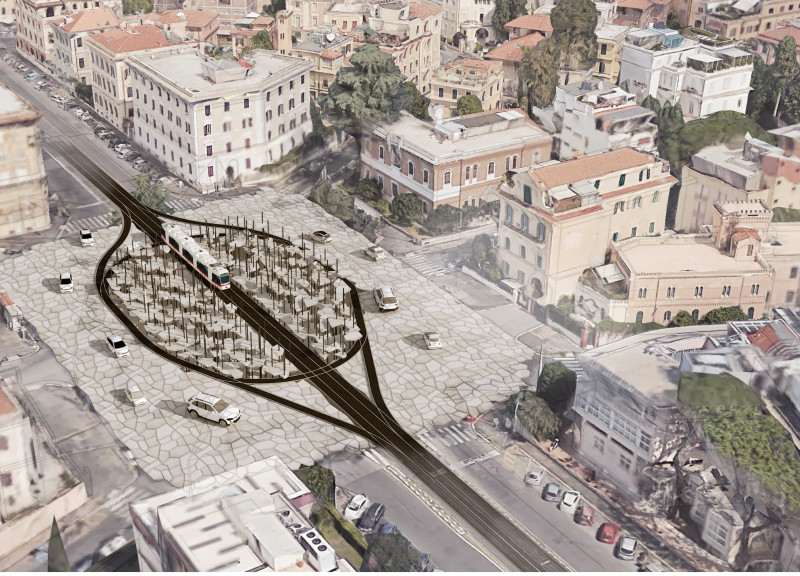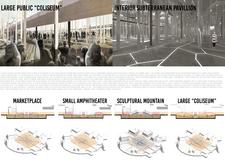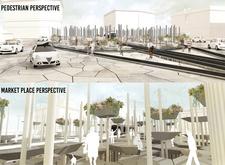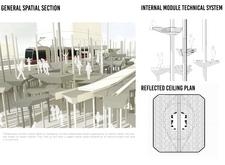5 key facts about this project
At the core of this architectural endeavor is the Large Public Coliseum, which acts as the centerpiece of the project. This adaptable space is designed to host various communal activities, from cultural events and performances to everyday gatherings. The use of prefabricated concrete modules allows for a flexible layout that can easily accommodate changes in function over time. This design approach emphasizes the importance of versatility in public spaces, making them relevant and useful for the community they serve.
Another essential component of the project is the Interior Subterranean Pavilion. This underground space blends seamlessly into the overall design, offering unique experiences that connect visitors with nature. Natural light filters through strategically placed openings, creating an inviting atmosphere while maintaining a sense of privacy. The incorporation of greenery and natural elements in this pavilion underscores the project's commitment to environmental sustainability, bridging the gap between urban living and the natural landscape.
The marketplace stands out as a vibrant hub where commerce and social interaction converge. Designed using the same prefabricated concrete modules, this dynamic space fosters a sense of community through a variety of vendor stalls, open areas for gatherings, and comfortable seating options. By prioritizing both functionality and aesthetics, the marketplace embodies a modern interpretation of traditional market spaces, encouraging people to engage with one another and support local businesses.
In addition to these key areas, the small amphitheater enhances the project’s social dimension. Its terraced seating provides excellent views for performances, while also creating an informal space for casual meetings and leisure activities. This integration of performance and relaxation spaces reflects the project’s aim to cater to diverse community interests and activities, offering a platform for cultural expression and engagement.
One of the most distinctive features of this architectural project is the Sculptural Mountain. This striking design element serves both an aesthetic and functional purpose, acting as a natural gathering point while also promoting ecological practices. By incorporating sustainable materials and techniques into its construction, the Sculptural Mountain exemplifies the project's commitment to environmental stewardship.
The Moving Poetry Paving is another innovative aspect of the design that draws inspiration from ancient Roman roads. This unique paving method enhances the urban landscape, creating a fluid connection between different spaces while preserving a sense of historical continuity. The deliberate choice of materials, including stone paving, not only establishes a visual narrative that honors the past but also provides durability and longevity in urban environments.
Throughout the project, the selection of materials plays a crucial role in both form and function. Prefabricated concrete serves as the primary material, allowing for efficient construction while providing structural integrity. Steel frame structures complement the concrete, introducing a sense of modernity and strength. Glass elements enhance transparency and visibility, fostering a connection between indoor and outdoor spaces while maximizing natural light.
A critical observation of this architectural project is its ability to blend historical context with contemporary design methodologies. By referencing the past, the project creates a narrative that resonates with both residents and visitors, offering spaces that are rich in meaning and functionality. The sustainable and adaptable nature of the design serves as a model for future architectural endeavors, highlighting the importance of community-focused planning in urban environments.
For further insights into this architectural work, including detailed architectural plans, sections, and designs, readers are encouraged to explore the project presentation in depth. Engage with the architectural ideas and concepts that define this thoughtful approach to modern urban living.


























